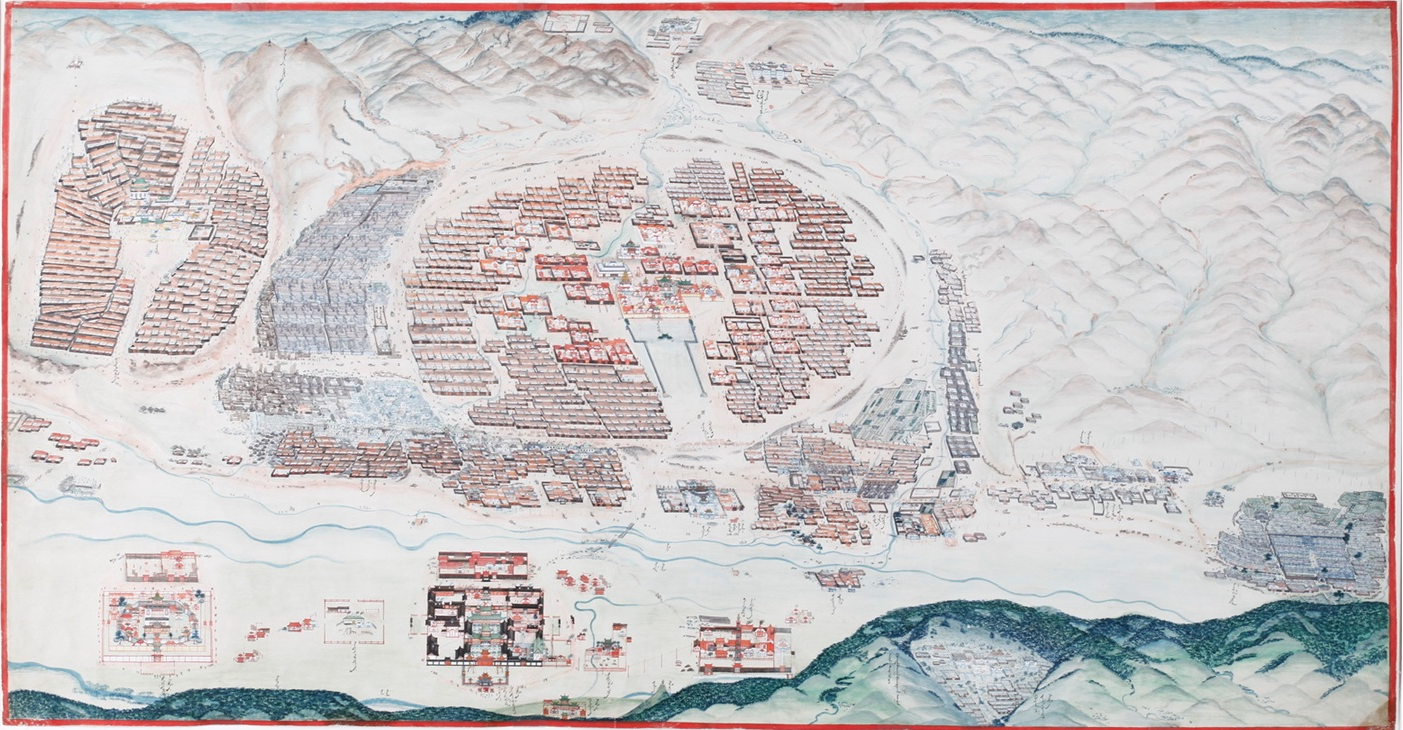
Ikh Khuree refers to the monastic-city complex that evolved in to the modern day capital of Mongolia, Ulaan Baatar (Ulan Bator). The settlement, nomadic until 1855, was founded by Zanabazar, the First Khalka Jetsundampa, in the seventeenth century. It became known as Ikh or Da Khuree during the time of the Second Jetsundampa, who made Urga his primary residence, a practiced followed by the proceeding incarnations until the ninth incarnation, Jampel Namdrol Chokyi Gyeltsen. In 1778, the nomadic city began to occupy the area within the Tuul river valley, surrounded by four sacred mountains. Da Khure was a center of religious activity, containing numerous temples, assembly halls and colleges, while also being the administrative center of Khalkha Mongolia, which was under Manchu control until 1911. Charles Bawden wrote that pre-Communist Urga rivaled Lhasa in artistic splendor. When the Mongolian People’s Republic was formed in 1924, Da Khure became known as Ulaan Bataar (Red Warrior). Buddhism was harshly repressed, leading to the execution of monastics and destruction of Buddhist sites. Until 1990, public religious activity was forbidden, and since then a revival has seen the restoration and rebuilding of Buddhist temples and colleges.